| Disclosure: Just to be open and honest the buttons and links you click on in the website will in most cases take you to another website where you can purchase the products I am reviewing. As an Amazon Associate I earn from qualifying purchases. |
Best Flies for Brown Trout – Catch more Fish
Quick Post Navigation
Best Flies for Brown Trout – Fill your Fly Box up with the Best
What you put in your fly box will decide how many trout you catch. Keep reading to discover the different types of insect life there is for a trout to feed on and the different stages of their lifecycles so you are better informed for your next session.
“Check out some of our other Buying Guides”
Insect Life on the River from Larvae to Adult
You might have fumbled as you started your trout fly fishing journey. Probably, you solely relied on fly recommendations from other anglers or went with any you came by.
For you to be effective in trout fly fishing and hit the necessary spots without missing a catch, you need to understand the life stages of various aquatic flies for brown trout.
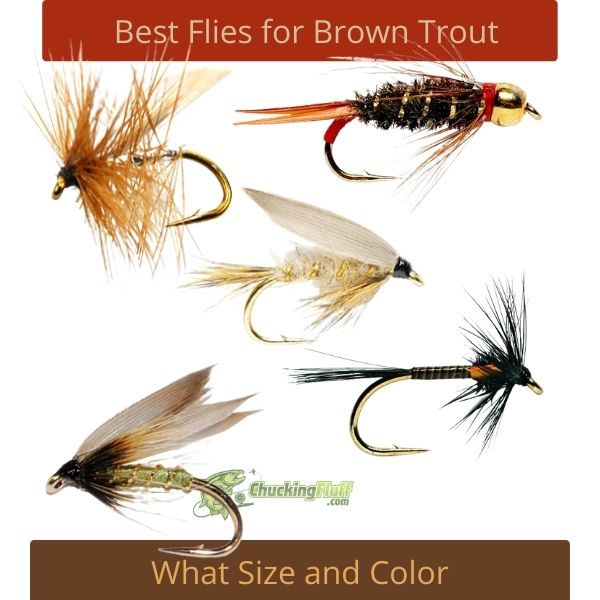
Brownies are cold-blooded and likewise for most of what they feed on. When winter sets in and the temperatures further drop, brown trout become inactive.
The insects they feed on too burry themselves in the silts or rock beds. A rise in temperatures comes with more insect activity and so does the brown trout behavior change.
The Metamorphosis of Insects
The life cycle of insects can be categorized into two-complete and incomplete metamorphosis. For incomplete metamorphosis, the eggs hatch, and the juvenile insects resemble tiny adults.
These insects either shed the exoskeleton or molt until they are adults. They don’t undergo the pupae stage and most insects with the incomplete metamorphosis have the nymph and not the larvae stage.
In the first days, they lack wings. However, wing pads will develop followed by wings. The last moly welcomes the mature reproductive system. Damselflies, stoneflies, and mayflies undergo this stage.
Complete metamorphosis is an advanced type of life cycle and there are four stages to it-egg, larvae, pupa, and adult. In entomology, the larvae is the feeding system and the growth stage of insects.
From their appearance, the larvae look different from the adult insects. This stage is characterized by chewing mouthparts. The full maturity of the larvae makes the insect a pupa. During the pupation stage, most of its inner anatomy is rebuilt.
The adult will emerge from the pupa. All insects’ metamorphosis are controlled by hormones secreted by glands in the insects’ head and thorax of the larvae and pupa.
How to Identify the Fly and Its Stage
Basic entomology is necessary for you to reach the pro stage of fly fishing. Here you need to identify the bug and its stage. We will address the major categories of brown trout insects that anglers mimic using fly patterns.
Stoneflies
The adults of stoneflies have 4 long shiny wings that lie flat on their backs when resting. They have a three-phased growth cycle-egg, nymph, and adult.
You will spot them on fast-flowing waters and because of this, they have flat bodies and stronger legs to cling to rocks. You can identify them by looking for 2 stubby tails and long antennae. These don’t have gills in the abdomen.
Nymphs upon maturity crawl to the shows then emerge. Anglers don’t bother about their emergence stage. After moving to the shores, they are washed into water currents and brownies gather in shallow areas to feed. They mostly hide under the rocks on the sides.
Egg ⟶ Nymph ⟶ Emerald Adult ⟶ Egg Laying Adult
Duns
Let the jargon of fly fishing not confuse you. In angling, a dun is the development stage of a mayfly that is between the nymph and adult stage.
It is scientifically called the subimago phase. It is a vulnerable stage of mayflies because wings develop here but with a dull and opaque color.
Dun’s welcome brownies to feed on the water surface. They are mostly brown-gray or gray with a shade of blue. But you will mostly come across the weird dun patterns in yellow and white-the pale morning dun.
Mayflies for Duns: Eggs ⟶ Nymphs ⟶ Duns ⟶ Adult/Imago/Spent Spinner
Sedges
Sedges are sometimes called caddisflies. Brown trout anglers are interested in the nymph stages of sedges and they will be cased or without cases.
They are a high determinant for the quality of water as they gather where there are clean waters with no pollution.
They don’t survive in poor waters. Sedges are nocturnal and will hide in greenery in the daytime. They mate at dusk on vegetation or flight.
Females lay eggs in or on the water and hatch into larvae in several weeks. The larvae are long and nymphs cylindrical.
Nymphs will either build cases, swim, or make nets. The adults have wings like tents and long antennae.
Egg ⟶ Larvae ⟶Pupa⟶ Emerged Adult ⟶ Egg Laying Adult
Damsel Flies
Damselflies look like dragonflies but the adults of the two have a slight difference in appearance. The damsel adults are smaller with wings held along though parallel to their bodies when resting.
They are also weaker fliers and have separated eyes. The nymphing stage is the longest in the development cycle of damsels.
Their nymphs have thin long bodies with defined wing cases and their color is similar to that of their habitat.
Emerged adults emerge in larger numbers and swim slowly upwards as they pose in between movements until they are on the water surface.
They love to head to the shores and climb on protruding objects to anchor and hatch into adults.
Egg ⟶ Nymph ⟶ Emerged Adult ⟶ Full Adult
Midges, Beetles, Gnats, and Black Flies
Midges are scientifically called Chironomidae. Midges are closely related to mosquitoes and are available on the rivers yearly. They don’t bite despite being mistaken for them.
You must spot them on the brown trout menu. Despite always hunting for larger meals when their prevalence is high, they won’t pass midges if they find any. They hang around and move in huge swarms.
Midges have two long yet narrow wings and no scales. Hardly will you find a midge bigger than size 16. Male midges have longer plumose antennae that look feathery. They have laid-back wings and are different from mayflies.
They grow in four stages and a brown trout angler is concerned about three-larvae, emergers/pupa, and adult/dry. The larvae are tiny worms with segmented bodies.
They are red because of their forage. Its pupa has an air bubble that they emerge from and always make a U shape when under the water surface. Your midge patterns with beaded heads mimic the pupa.
The adults are mostly used for dry fly fishing. They are tiny and quite tricky to fish. When on water, you can mistake them for mosquitoes.
Midges: Egg ⟶ Larvae ⟶ Pupa ⟶ Emerald Adult ⟶ Mating Adult
Beetles like to float lower in the water you can’t spot any high-profile wings.
“Check out some of our other Buying Guides”
We all have our own idea of what flies we think should be good to fish for wild brown trout but just because we think it doesn’t mean they will work. Here we will discuss some of the best flies for brown trout and ones you would be wise to carry with you on your next fishing adventure.
I have short-listed seven flies that according to Pat O’Reilly in his book “Matching the Hatch” are called his magnificent seven. These flies when carried will give you an option for almost every situation you will come across when fishing for wild brown trout. Although we are talking about seven patterns in total we will need several sizes of some patterns to really cover all situations.
Darting and Stonefly Nymphs
Nymphs of pond and lake olives are agile darting creatures and can be found in any depth of water close to the surface, in the middle and at the bottom. To represent these creatures the gold ribbed hare’s ear has become the angler’s favorite.
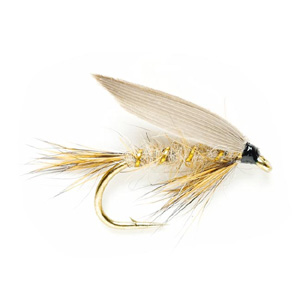
The tying pattern is not really that important but more the movement and size of the fly. When trying to get the pattern down deep a lead bodied fly has been developed as well as the gold head both of which are very successful. Letting the fly sink to the bottom then a quick lift of the rod to induce life into the fly will usually bring a take from a cruising trout. Sizes 14 and 16 work well with these.
Dark Duns and Spinners
Many of the upwinged insects on rivers and stillwaters have a drab olive body as duns and brown as spinners. A fly pattern that was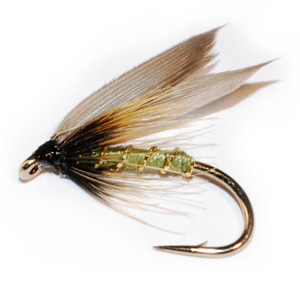 developed in 1854 by cannon Greenwell and James Wright on the Tweed has become the basic pattern for fishing olives during the season.
developed in 1854 by cannon Greenwell and James Wright on the Tweed has become the basic pattern for fishing olives during the season.
The Greenwells’s glory as it was named originally tied as a wet fly has now many variations but the dry pattern with starling upwings is probably the best allrounder in sizes 12 and 16.
Light Duns and Spinners
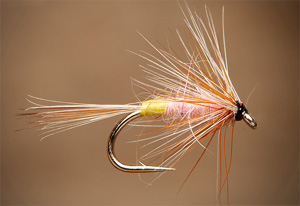
A majority of upwinged flies have a pale wing and a fly pattern that was developed in 1900 the Tups Indispensable is a good representation of any light winged flies that may be hatching and a good alternative to the Greenwell’s Glory. Keep in sizes 14 and 16 with you.
Sedges and Alders
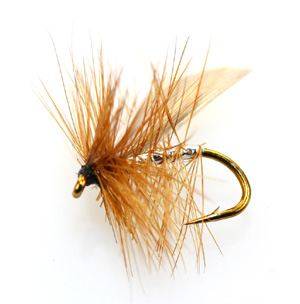
During the summer and autumn months, sedges become very active in the evenings. These hatches are anything from a few millimeters to about 30mm and come in many colors. The most common size is usually around 10mm and a pattern to imitate these hatches and is a good compromise is a silver sedge. This fly pattern has stood the test of time and is particularly good for trout in rivers and streams. I keep sizes 12 and 16 with me for this one.
Damsel Nymphs and Fry
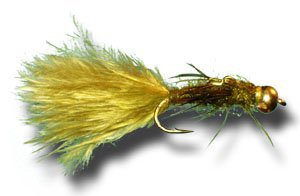
Damsel nymphs are a staple diet of trout who sit in wait along the shore for hatching nymphs to feast upon in many stillwaters. Many river anglers overlook this pattern when fishing and will usually fish with dry flies or other similar lures. However, a damsel nymph can be very productive and should be carried. A great asset to any fly box is the damsel nymph in sizes 10 and 12 which not only cover trout eating damsels but backs up for trout cruising after fry also.
Beetles, Midges, Gnats and Black Flies

Throughout the season there are many tiny black and dark insects from beetles to spiders and flies that get blown into the water from overhanging bushes and trees. So it is essential that you carry something small and dark to offer trout feeding off such insects.
The Welsh name for a small beetle is Coch-y-bonddu and it is this pattern developed for this situation we will use here. Basically, it represents the tiny beetle and will come in handy and can be fished wet or dry in sizes 14 and 16.
Buzzer Pupae
A staple diet for trout on most stillwaters are chironomids and these insects are most desired by trout during the pupae stage when trying to escape the water to hatch into midges. It is at these times when a hatch is on that trout will favor the pupae over most every other insect in the water leaving many anglers frustrated if they are not carrying these buzzer patterns.

A simple suspender buzzer olive in color would be a good one in sizes 14 and 16 to complete our list.
Well, there you have it a selection of seven patterns that any self-respecting wild brown trout angler should carry in his fly box. They have pulled me out on many days when the fishing wasn’t going to plan and I hope they can be successful for you too.
I would be interested to hear what patterns you would think are essential to carry in your box as each location and water type will have its desired flies, but if in doubt try one of these. Also, check out my post on matching the hatch techniques for more information.
FAQ’s – Questions about Flies for Brown Trout
What is the Best Fly for Brown Trout?
- Darting and Stonefly Nymphs – Gold Ribbed Hares Ear
- Dark Duns and Spinners – Greenwells’s Glory
- Light Duns and Spinners – Tups Indispensable
- Sedges and Alders – Silver Sedge
- Damsel Nymphs and Fry
- Beetles, Midges, Gnats and Black Flies – Coch-y-bonddu
- Buzzer Pupae – Suspender Buzzer
- Streamer – Wolly Bugger
- Nymphs – Pheasant Tail
What size fly should I use for Brown Trout?
Dry flies 12-16, wet flies 12-16, streamers 4-6 are good. You can get away with others at times but have a selection of sizes and colors in your box to cover more situations.
What colors do Brown Trout like?
The best answer to this is to match the hatch, trout will feed on whatever is hatching so if it’s green then use a green-colored fly.
Is it better to throw my flies upstream or downstream?
Upstream if fishing clear water so the trout can’t see you coming behind and downstream in murky water and using the flow to drift the fly on the swing. If nymphing it’s usually down with a short cast at a 45 degree upwards.
What other Flies do Brown Trout Love?
Pack rabbit strip streamers in size 8, blue, olive, black, or white wooly buggers in size 8, rubber-legged skunks in size 10, pheasant tail nymphs in size 12, beaded and non-beaded green caddis in size 14, and San Juan worms in size 14 and 16.
Which flies should I pack if I want to catch Brownies in early fall and summer?
Mature brown trout are attracted to ants, hoppers, beetles, and other attractor patterns at this time.
Do Brown Trout feed on flies at the bottom of the river?
Brown and other trout sometimes feed on forage at the bottom but they aren’t common bottom feeders.
When is the Best time to catch Brown Trout?
Feeding time is the best time to catch trout. Target when mosquitoes and other bugs are at their most active. Late evenings and early mornings of warmer days are also good times.
Months long fly fishing action with the best flies for brown trout
Aquatic insects live for about eleven months below the water surface. Brown trout will happily feed on larva, nymphs, and pupae throughout the year.
These forms are common and readily catch fish. While you shouldn’t limit yourself to these, understanding the basic entomology of the insects you fish is vital.
It gives an angler an easier time to choose and pack flies depending on the season and location they intend to fish.
Know the stages of these insects to know the best patterns to match with the hatch and which ones to go for when there isn’t any prolific hatch.
Adjusting depending on the water behavior and forage will have a great influence on your fly fishing experience.

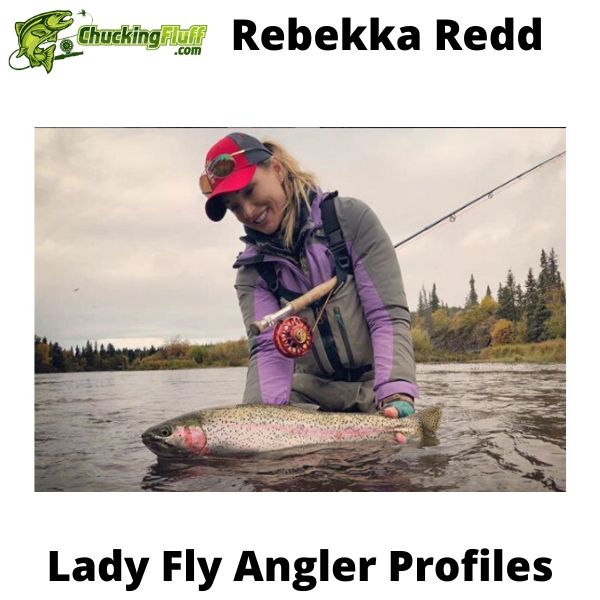


Good day, I’m pleased to come across this important information. Well, I have never gone fly fishing, so I did not know about the best flies for brown trout. This piece of writing is educative and detailed enough for anyone who wishes to go fly fishing. Having read this post, I’m thrilled to have learned much about the best flies for trout and their life-cycles. This is helpful.
Knowing the life cycle of insects will be helpful when searching out trout. They instinctively know what’s on the menu so being able to match those hatches when they come will give you better catch rates.
Thank you for sharing this super helpful information about the best flies for brown trout. It’s essential to know the things that they prefer to eat so that you can cast the right size and color of fly.
I’m fortunate to have a friend who makes his own flies and spends each weekend finding trout in some creeks that I would have never thought to look in (they are really small and shallow). Between your helpful articles and his local advice, this year should be a lot of fun!
Hey Aly, being able to tie your own flies is a great asset to any fly angler. It’s something most of us progress onto after learning to fly fish.
When discovering a new hatch of flies or section of water where the flies in your box don’t seem to be working being able to mimic a pattern by tying some materials together at home and returning again to try adds to the fulfillment of being able to fool the brown trout into a take.
It makes it twice as sweet when you catch on your own tied flies.
I would never have thought about the need to understand insect life to go fishing. Now that I see it though, it makes perfect sense. And here I believed all you needed to go fishing is a boat, a rod, and a crate of beer. There is clearly a lot more to fishing then I thought. The best piece I am learning today is to match the hatch.
And wow! those hooks are so intricately designed with the fly look. It captures the beauty of the planets humble little flies perfectly, no wonder fish go for them.
I hear you Kelly, a lot of folks don’t realize the need to know more about entomology. Having a bit of knowledge can help you get more from the sport and increase your catch rate. As you say Matching the Hatch is a good tactic to have to be able to get taking fish. It’s not a deal-breaker as you can still catch fish without knowing it but it will save the day if they are not biting the flies you are offering.
Man you are a serious professional when it comes to fly fishing! I love fishing but have never fly fished before. Been looking into it and this is by far the most extensive site concerning the subject. Will definitely be returning for more information to answer questions I have when I decide to get out on the river.
Excellent Drew, look forward to receiving more comments and questions from you.
As I am reading the first paragraph and you mention “what flies we think would be good” and my immediate thought went to what insects would they be feeding on, what insects are hatching now.
Then in the second paragraph I see the offering of the book “Matching the Hatch.” Very well placed. I am from central Ark and the closest stream for trout was about 90 miles away. But I took up fly tying in the 60’s because I loved fishing for bream with a fly rod. The styles of flies that you show are excellent. I can tell from your knowledge that you have been at this for a few years.
Been doing it for a while Sonny that’s for sure. There are thousands of flies on the market and you can get caught up in colours and patterns but I have found these are as much as you really need. A decent place to start before you can do more matching the hatch for your current water and tye or purchase your own patterns.
I’m not into fishing, but my dad is and it’s his birthday in two weeks, so I was looking for some great gift ideas.
I know he has these flies for fishing. It was quite interesting reading your article, which has given me a little bit more insight in the matter. From what I understand is that you favor the Gold Ribbed Hares Ear, so I guess I’m gonna get him that one.
Thanks for the solid advice and I’ll be sure to send him a link to your website. After I gave him the present of course. 😉
Jurgen you can’t go wrong with the GRHE Gold Ribbed Hares Ear. A top fly and one I always carry with me.
Works well on other species also I have caught Salmon on it too.
Hi I was wondering if you could help me with a question I’m concerned with. I’m relatively new to trout (and fly) fishing and I was recently informed that I may need a different sort of fly for fishing of brown trout during in the Autumn months of September, October and November – regardless of water type.
Is this true, and if so what would be your top choice? (for fishing mainly in UK waters)?
Chris trout fishing in Winter does require different flies. As trout are less likely to chase after prey (less food so less energy) you need to use a few techniques to help entice them. I have done a post here on Winter fly fishing for trout hopefully will help you out.
Here in BC we I have only ever seen the Gold ribbed hairs ear without the wing. I really like the wing idea as it looks like it could be swung or towed in a lake, not just dead drifted. I can’t remember the wing material that is on all these patterns. Was it some kind of duck wing? It’s been a while since I’ve tied anything. Seems easier to buy lol. Thanks in advance for any response.
The wing material is usually paired slips of mallard or starling wing. I know what you mean about buying flies tying does eat up time but it is another hobby many fly anglers love also.
I tied a good deal when younger and have recently done up my shed to provide a tying bench which I hope to get into this season. Having two boys I want to pass on the skills I had as a youngster so they can enjoy all aspects of the sport also.
Hi Mark,
I am not an expert in fishing, but my husband is. In fact, he was a fisherman once, and he knows every type of fishing style. Since we live near the sea, he often goes fishing, but he doesn’t have all the material needed for it anymore. He used to, but that was a few years ago. Anyway, I really want to surprise him and buy these files in the article. I just would like to know if there is a nice box that I can buy so I can store the files inside?
Thank you for this excellent post!
Hey Daniella he will thank you for the flies they are guaranteed to catch fish. Here is a wee fly box that would suit them well, its waterproof and floats so if he drops it in by accident he has o good chance of retrieving them intact.
I’m not a fisher and I didn’t even realize flies make catching fish better. Wow! You learn something new everyday. I’d like to take my kids fishing sometime, and it would be nice if we could catch something. I may have to look into the flies you mentioned because without this article I knew absolutely nothing about them. Thanks for the great info!
Hey Tiffany, there are many flies on the market and each location will have a set unique to it. However this list is bases on the natural insects that inhabit our rivers world wide. They infact should work almost anywhere there is fish. Its a great sport and one I would recommend to get the kids into all that fresh open air will do wonders for them. A saying I like is “more tackle boxes and less x-box’s”
Good Day, Mark.
What a beautiful array of flies.
This morning, there is 6 inches of snow on the ground in my backyard.
Tomorrow I am going river fishing for steelhead.
More and more of my friends are getting into fly-fishing.
I am rapidly getting fascinated by this wonderful sport.
“Match the Hatch” is the keyword here.
These “wild brown trout” flies are beautiful.
Is fly-fishing best enjoyed on lakes?
I see the occasional hard-core fly-fisher on the river, but the hatch and water column science doesn’t apply so well on the rivers, or does it?
Am I correct to assume that lakes are where the best action is?
What is the best set-up for a beginner?
Thanks, Paul
Hey Paul I enjoy fly fishing on the rivers more than the lakes, I like the running water it makes it easier to swing the fly. Lake fishing can be mundane at times when there is no hatch on. It can also be a lot of fun, it’s all down to your personality and how you value your time out in the open. If your going after steelhead on a river where the bankings are snow covered then I say you are in for a treat even if you don’t catch anything.
I just did a post on some of the best fly fishing combos for beginners you find this of some interest. As you will read there is no best fit for allits down to what type of fishing you are going to do the size of the river etc so check it out and hopefully it will lead you to your own outfit.
Tight lines my friend.
I got to say I have never been fishing .There is no lake or rivers near where I live, but after I visited your website I am sure one day I will try it.
Just wondering when i do take up the sport of fly fishing which of the trout flies listed should I try first as a complete novice would be good to at least have decent flies to increase my chances of success.
If you can into the sport you will be pleasantly surprised at how easy it is and how much fun it can be. Not only the art of fly casting but the fun of catching trout of bass on flies.
On your question I would say from my list the Gold Ribbed Hares Ear has to be one of my favorites, it resembles so many insects in the water that trout go crazy for it. If you can get a weighted one and bounce it along the bottom so much the better.
Tight Lines
Hi there, the winter is fading away everyday that goes by now and I’m really looking forward to the spring so I can finally go fishing.
By reading your article I saw the Sedges and Alders and think that will be very good for me. I really look forward to the next fishing season here and your article has gotten me really excited.
Sedges are a particular favorite of mine the silver sedge has picked me up many a trout. Winter is fading fast but we just had a few inches of snow today that that would stop a hardened fly angler who knows how to work the water in the colder months.
Hey there;
Thanks for a great site man. I personally enjoyed reading the “Casting Clinic” area, and will absolutely share this with all my Facebook fishing buddies.
The videos in the “Beginner Class” was an BONUS, and this should/will be helpful for all visitors to your site.
These brown trout flies look like they will work well on my local water. I’m used to using more modern flies but these traditionals look top notch and the fact they worked well all those years ago will mean they will work now. Ones to keep in the box for sure.
Steve
Yes indeed they will work now I can vouch for them. I never leave home without them.
I know what you mean about modern flies there are so many on the market now that it’s difficult to know what to use. However these patterns were developed to mimic insects that were around the waters edge and still are.
Modern flies I think are more to catch the fly anglers than the fish.
I live in the mountains in North Carolina and fly fishing is in the their blood. I grew up in the Florida Keys and more of a salt water fisherman. I’m getting ready to give fly fishing a try in the spring. I saved your site for future reference and I loved the article on brown trout. I’m glad I found your website. Fishing is fishing so I’m sure fly fishing is for me.
Jack
Fly fishing is for anyone who enjoys being outdoors with a rod in their hands. I personally love it as I get to explore more of a river than those guys who just sit with their bait bucket casting to the same area. Not for me I like to keep on the move.
There are thousands upon thousands of fly patterns on the market today and a beginner can become confused as to what to try. This list was a sample of flies that work well for Brown Trout and ones I always try to keep on hand.
I do like to sample new patterns and have myself a tying bench and occasionally try things new when I get a chance to tie.
Tight Lines!
I really enjoyed this article! Living in Montana along the banks of the famous Yellowstone River, fishing is a way of life. Not for me so much as I don’t eat fish, but it is a big part of life here. I really enjoyed and learned a lot from your article, such as your pick for when to use certain flies and why, and even a little history behind them! Great job, I want to come back and see postings about some fishing adventures!
Thanks for stopping by Don, you don’t have to eat the fish to enjoy fly fishing for them my I say.
Having that great river on your doorstep it’s almost a sin not to be out there fishing for those trout.
Only kidding! Everyone has their own pastimes that they enjoy and maybe you haven’t had the chance to sample it yet. If you do get the chance you may find your thoughts on fly fishing changing.
For a bit more info check out my series on fly fishing for trout with a fly rod. You will get a good introduction to all aspects of the sport.
What a great post about flies for brown trout.
Question: are these flies only for brown trout? Can you recommend some flies (or even live bait) for californian trout?
Here in Croatia we have brown trout and californian trout that was imported few years ago from the US.
Very good article. Keep up the good work.
Miroslav
Amazing Miroslav they imported them from California, did a bit of research and it seems they are well known outside California being resident to mainly two rivers. To preserve the species seems they have been introduced to streams in Nevada and other parts of the US.
As a trout though I don’t see it being a problem using these flies. Like all trout they will feed on what is naturally available and if there are insects that resemble these patterns in Croatia then they should work.
Hi Mark!
What a great page, never thought there would be such a vast choice of flies to catch brown trout!
This will come in handy for when I go fly fishing with my old man again.
I am no expert but I am sure he will appreciate the knowledge I have gained through this post!
Any of them you reckon have a higher rate of catch by any chance?
What flies work best, now that is the million dollar question? There are so many things to consider before you can really answer that.
What time of year it is, spring, summer, autumn, or winter as each will have certain insects that are active and ones the trout are feeding on?
Trying to match that hatch will also be important as when the trout are feeding on a small green gnat and you have nothing in the box the same or close it could be the end of your day. Although that is not always true as you can fool a trout into taking something completely different.
However all said and done if I had to choose only one pattern from my list I would go with the Gold Ribbed Hares Ear as it imitates so many insects during the full year you could probably get a take or two during any time.
Saying that though I do recommend doing your recon and watching what is happening. I would never go to a river with only one type of fly pattern, but thats just me as I love flies too! 🙂
Hello Mark, thanks for the post on the best flies for brown trout. Since I was young, I always wanted to try out fly fishing once or twice.
It seems to require a lot of patience and skill. Whenever I have the time to try out fly fishing for the first time, I would purchase the Dark Duns and Spinners and see if I’m lucky enough to bring home a trout or two.
Thanks again, and continue the hard work!!
Dark Duns and Spinners would be a good selection to try. Remember to check the river for movement and watch what is going on, having a selection of different flies is always a good thing so you can change to try and mimic what is happening on the river.
I was just wondering if you even make handmade flies or if you just buy them? I’m sure the ones you buy are great but making them sounds like it might be a good hobby.
Yea I do actually tie them myself. Its all down to not having enough time now though. It’s easier for me to buy but its a real pleasure to catch a trout on my own made fly. When I was a youngster I used to tie all summer and sell my flies to the local tackle shops. It was the start of my marketing career and I didn’t even know it then. 🙂 I do plan to put up posts on tying flies, the materials used, the techniques etc. Watch this space.